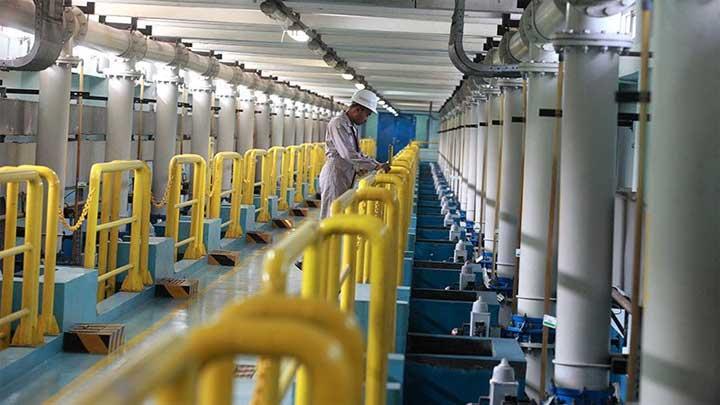PAM Jaya Aims to Suppress Water Pipe Leakage Down to 24% in 2023
Translator
Editor
6 December 2021 11:01 WIB

TEMPO.CO, Jakarta - Currently the leakage rate of water distribution from non-revenue water (NRW) reaches 46%, explained PT PAM Jaya Director Priyatno Bambang Hernowo. NRW percentage loss is caused by meter inaccuracies, incorrect data and illegal connection consumption.
"Indeed, most of the leaks were caused by physical leaks. That's because our pipeline network no longer exists, which means there are a lot of leaks," said Bambang in his statement, Monday, December 6, 2021.
He further explained the NRW sector leakage resulted in the amount of water released by PAM Jaya not being the same as that received by the community and harming PAM Jaya. According to Bambang, the ideal NRW leakage is 25%.
Bambang said that his side is currently trying to suppress the leakage rate to 24% in 2023. The leakage suppression is aligned with PAM's attempt to expand their pipeline network in Jakarta which will cost up to Rp 30 trillion. "Rp7 trillion to lower the NRW from 46% to 26%."
He also explained that the number of pipe leaks are not even in each area. He exemplified in Pulomas, the number of leakage surpassed 60%. Areas like this will be prioritized to be fixed by PAM Jaya.
Among the causes of leakage is caused by people taking the water from the distribution pipes illegally. This happened because the access to PAM Jaya pipeline had not yet entered the said people area.
Henceforth, Bambang said PAM Jaya pipeline access expansion will align with the fixing of leakage. "NRW must be reduced, yes, but there is a next step after the reduction. We have to add a pipeline network to that area (the one with no connected pipes)," said Bambang.
Read also: Dead in the Water
M JULNIS FIRMANSYAH | GRAVEN FIKRI (INTERNSHIP)


















